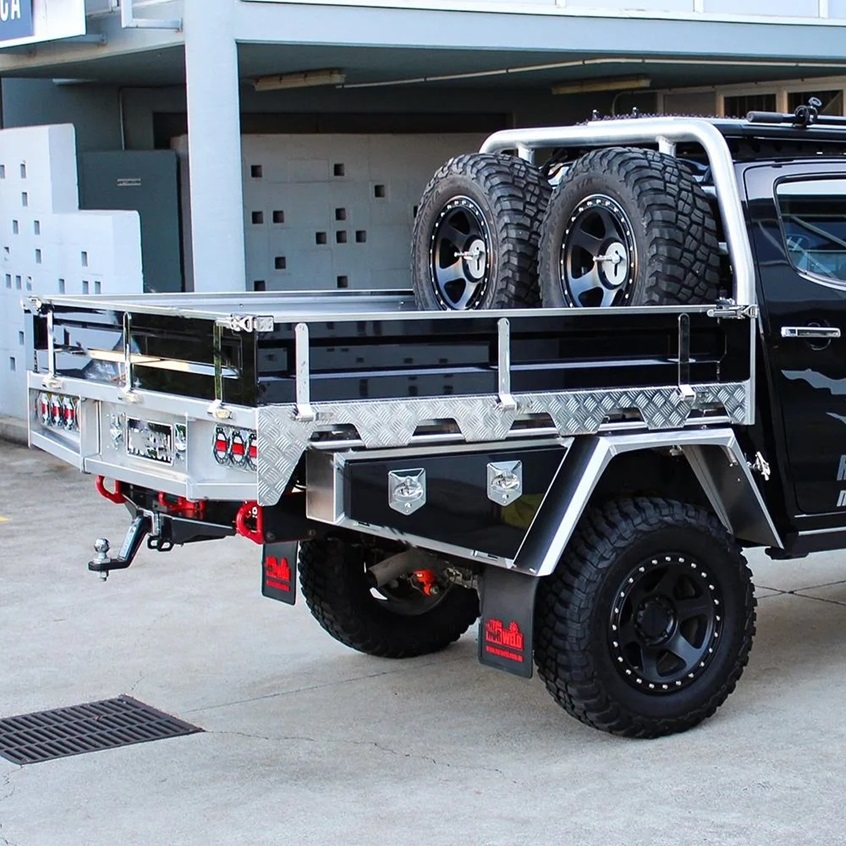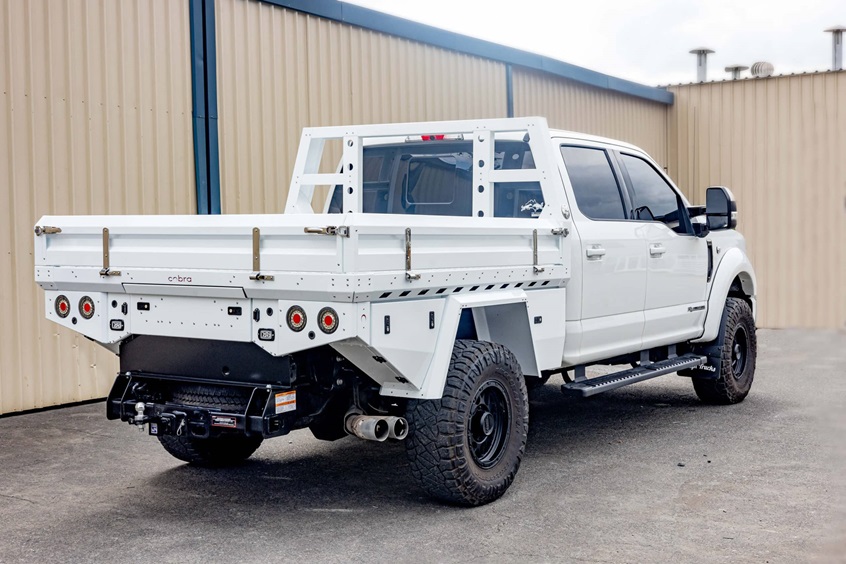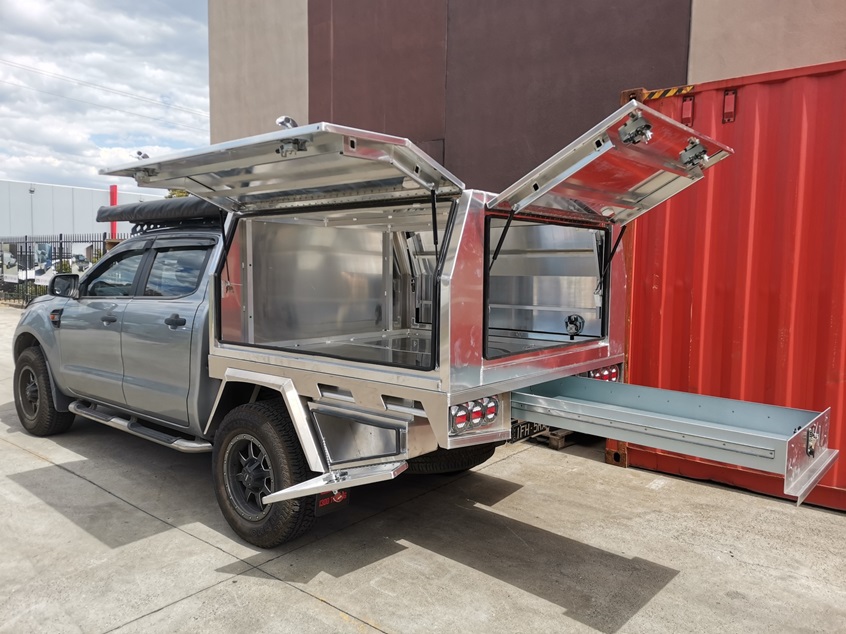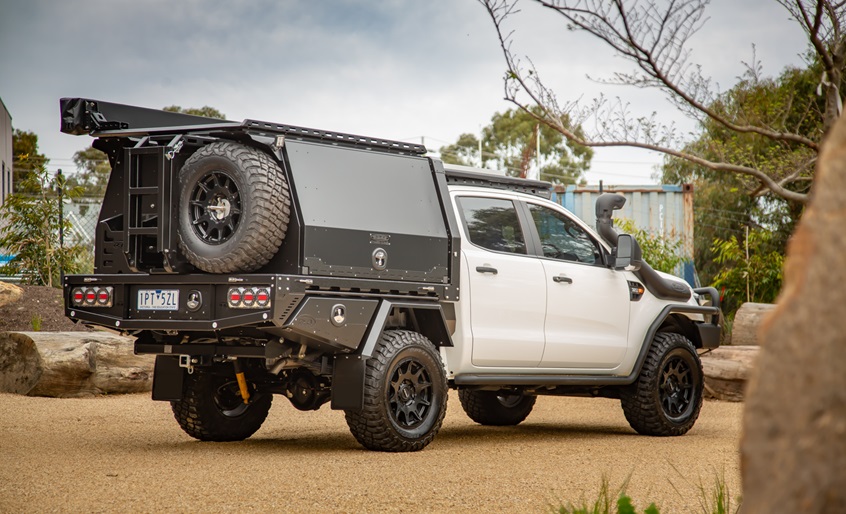
The 3 Most Common Ute Accessories
Most utes leaving showrooms come with a factory-fitted tub. This may be adequate for some uses, but for all self-respecting tradies and more demanding off-road use, the tub is the first ute part to get a conversion. Trays are the standard gear if you’re thinking of transporting anything with more heft and bulk, and when you need the versatility, security and practicality toolboxes and canopies provide.
These are the 3 most common utility ute accessories, and you’ll rarely find a ute used the right way without one. They almost double the available space at the back, fit just about any type of gear, and transform your vehicle into a workshop on wheels with a toolbox that safely stores all your gear. If you have the itch to venture off-road, canopies can also be equipped with all the goodies you need for longer trips, including the kitchen sink.
Contents
Basics of Ute Trays

Tubs trump trays with better looks, but their benefits end there. A well-appointed tray, either as a factory option fitted to a single cab, or a tray conversion upping the utility of double and extra cabs, is bigger in every dimension, can carry bigger and heavier gear, and is the solid foundation if you’re thinking of adding a toolbox or canopy. Choose a flat tray if going with extra big loads, or variants with integrated high sides for more security. High sides are built to the same high standard as the tray floor, and feature heavy-duty latches for quick loading and unloading.
Tray Build, Materials, Sizes and More
To deal with the abuse of heavy items, tray floors need to be exceptionally thick without being a burden on the rear axle. 6mm thick aluminium, built around robust main and subframes, and sitting on reinforced C-channel provides the needed strength and stability for any load. Floors can be had in a choice of finishes, with checker-plate or ribbed floor beds both decent options for a non-slip surface. High sides come in 250mm, 300mm and 450mm types, depending on the loads you’ll be carrying.
Aluminium sheds weight when compared to stainless steel, and won’t rust in downpours or river crossings. Steel is still regarded as the extreme option, but needs to be coated. Moreover, it’s prone to staining, adds considerably more weight, but tends to cost slightly less. If you do like steel, consider suspension upgrades and a few sets of tyres.
Sizing the tray depends on the cab type. Single cabs are naturally the longest, averaging around 2500mm, extra cabs 2100mm and dual cabs 1800mm, making for a nice square surface considering all are roughly 1800mm wide. Ample space for fitting a pallet of any size with more to spare.
Lastly, consider extras. Headboards shield the rear cab window, mudguards keep everything clean, tie-down points secure gear, and additions like rear ladder racks are necessary for safely transporting long items. Find a tray builder that offers standard builds, but can also fit the tray with any accessories you’ll need.
The Functionality of On-Tray Toolboxes

Toolboxes bolted onto a dedicated tray have dozens of functional benefits. They increase overall usable space, have the organisational skills to keep all tools, clothing and equipment neatly arranged and accessible, and safeguard that gear from inclement weather or sticky fingers. And with everything in one secure place, you’ll always have everything you need for the job. No tools, accessories or equipment is lost or damaged.
There are quite a few designs to choose from. Gullwing boxes, with doors that open at either side, are a tradies’ favourite, with high-side, low profile, square edge and tapered tool boxes some of the other utility ute accessories that sell well. Overall dimensions vary but are limited by tray width and length, and the height of the rear window. In terms of materials, aluminium is again the favoured option, balancing weight and durability.
Look for internal storage, like drawers, shelves and trays that suit your gear. Also ensure you get the suite of safety goods, like recessed locks and hinges, rubber seals to keep water and dust out, and accessories that up usability, particularly jerry can holders and gas struts for doors.
Upsizing with Canopies

Canopies can be considered bigger versions of toolboxes. But unlike toolboxes, canopies usually use up all the tray space. Paired with a sturdier build, often consisting of reinforced floors and roofs that can hold considerable weight, they’re the heavy-duty option for anyone with more work gear or off-roaders needing to cram ovens, fridges, sinks, battery packs, and extras needed for longer journeys off the tarmac. As such, they offer much more space both in and outside.
Aluminium is the common theme here, but usually in thicker variants than you’d find in toolboxes. This allows loading gear on top or fitting extras like canopy racks and ladders. There’s less variety in designs, with fixed canopies comprising the bulk of sales, and costlier but more practical lift-off canopies allowing you to use the canopy as a standalone unit, or have the tray available for other gear or equipment.
Regardless of which accessories for utes figure on your shopping list, ensure you go with respected builders. Most offer defined product lines, but can also custom build a tray, toolbox or canopy that meets all your needs.

